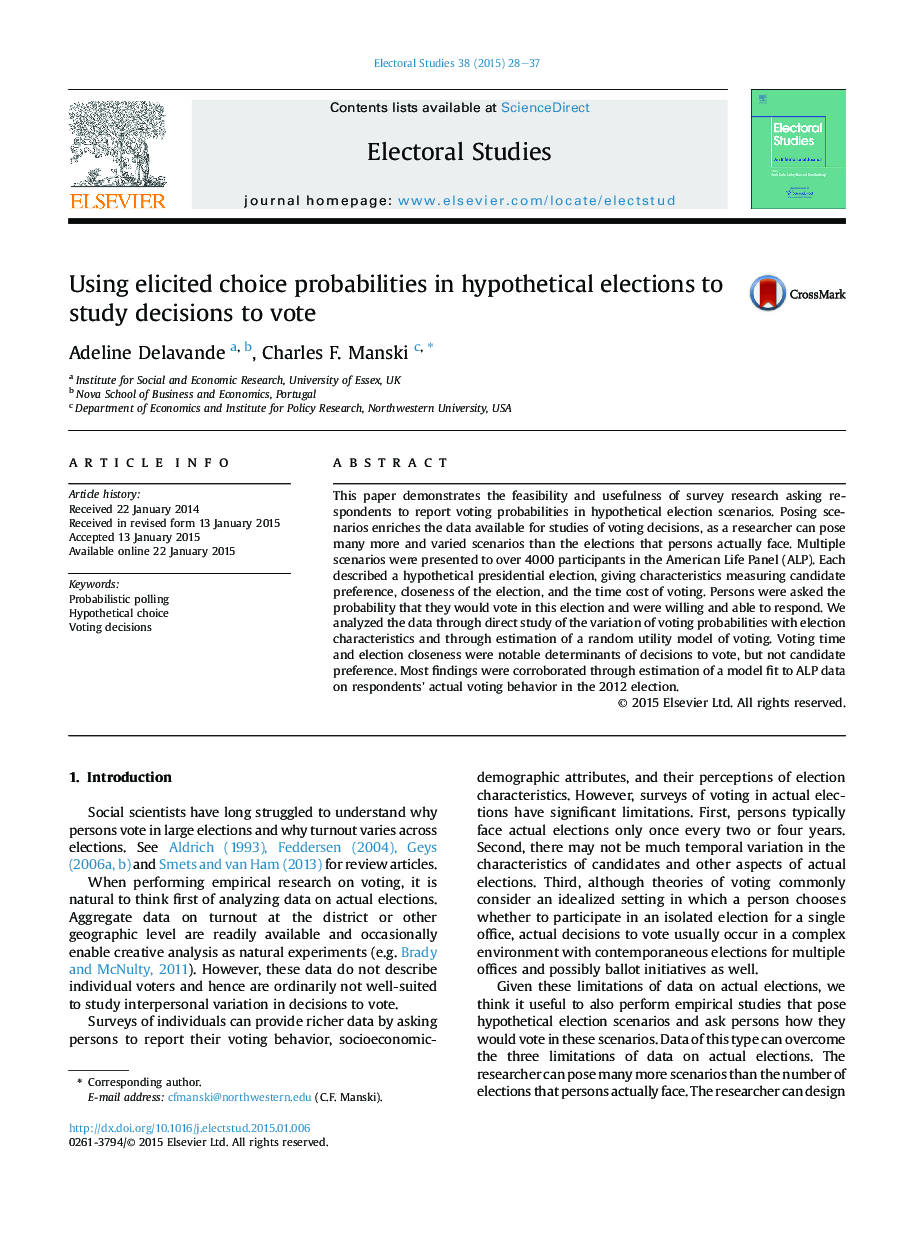| Article ID | Journal | Published Year | Pages | File Type |
|---|---|---|---|---|
| 1051705 | Electoral Studies | 2015 | 10 Pages |
•We performed survey research asking for voting probabilities in hypothetical elections.•Scenarios describing hypothetical elections were posed to participants in the American Life Panel.•We analyzed the responses and estimated a random utility model of voting.•Voting time and election closeness were notable determinants of decisions to vote.
This paper demonstrates the feasibility and usefulness of survey research asking respondents to report voting probabilities in hypothetical election scenarios. Posing scenarios enriches the data available for studies of voting decisions, as a researcher can pose many more and varied scenarios than the elections that persons actually face. Multiple scenarios were presented to over 4000 participants in the American Life Panel (ALP). Each described a hypothetical presidential election, giving characteristics measuring candidate preference, closeness of the election, and the time cost of voting. Persons were asked the probability that they would vote in this election and were willing and able to respond. We analyzed the data through direct study of the variation of voting probabilities with election characteristics and through estimation of a random utility model of voting. Voting time and election closeness were notable determinants of decisions to vote, but not candidate preference. Most findings were corroborated through estimation of a model fit to ALP data on respondents' actual voting behavior in the 2012 election.
